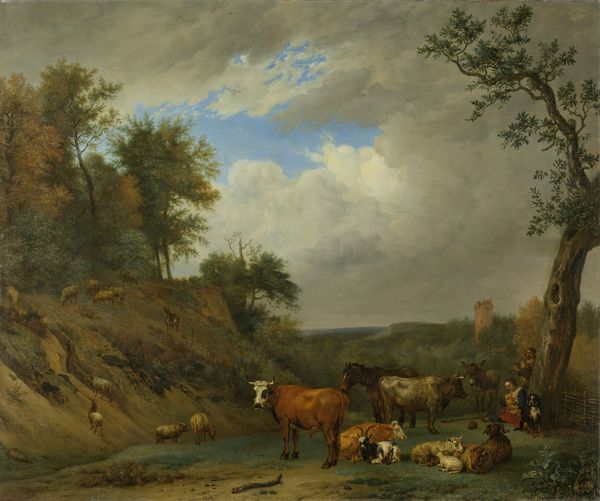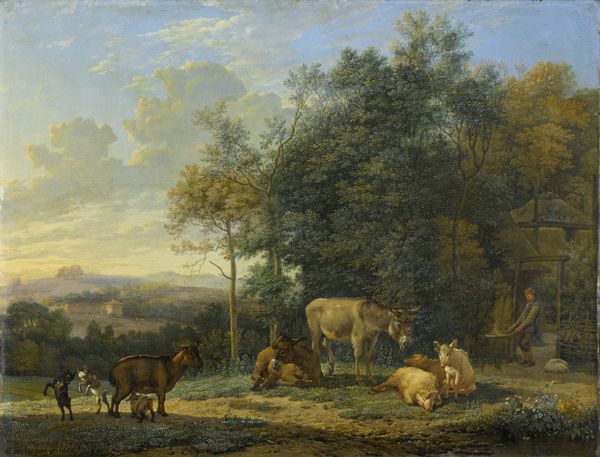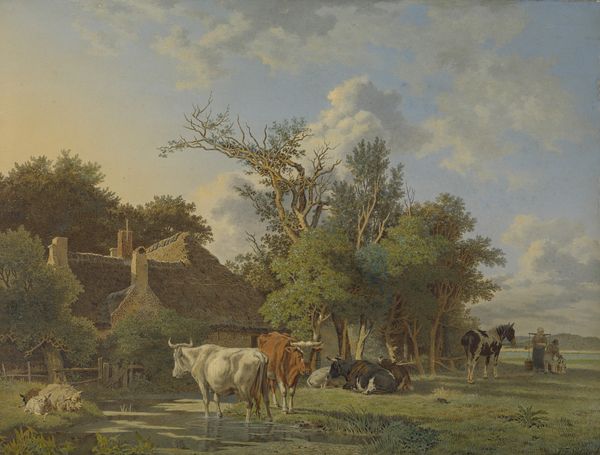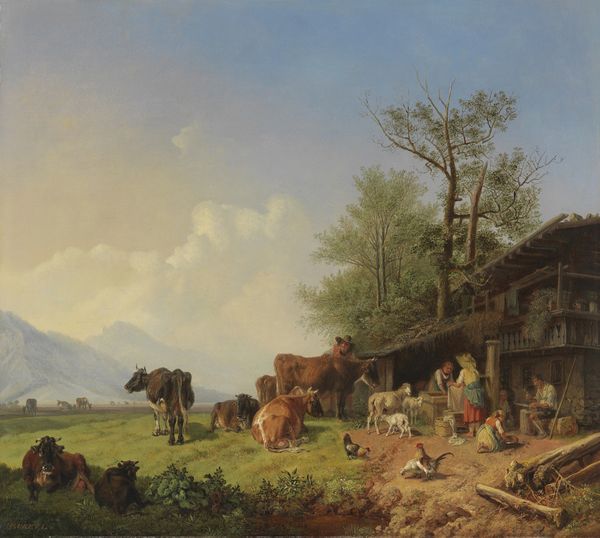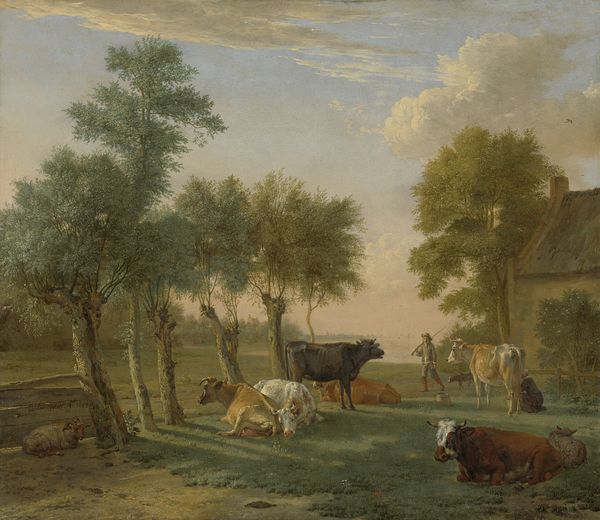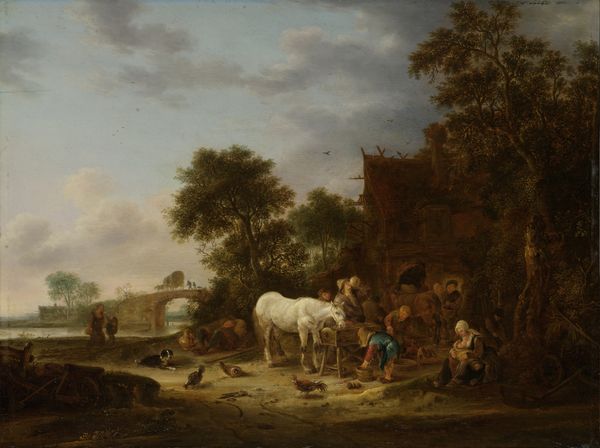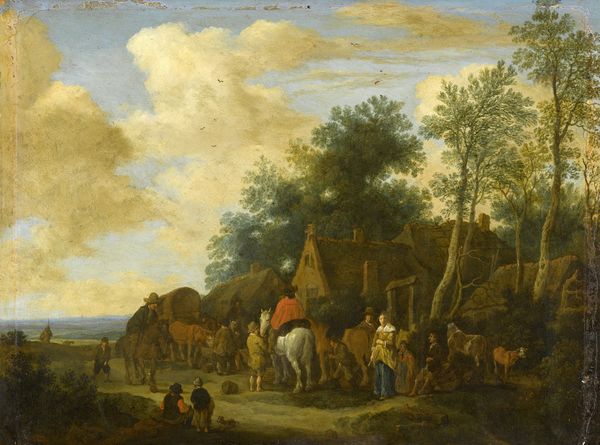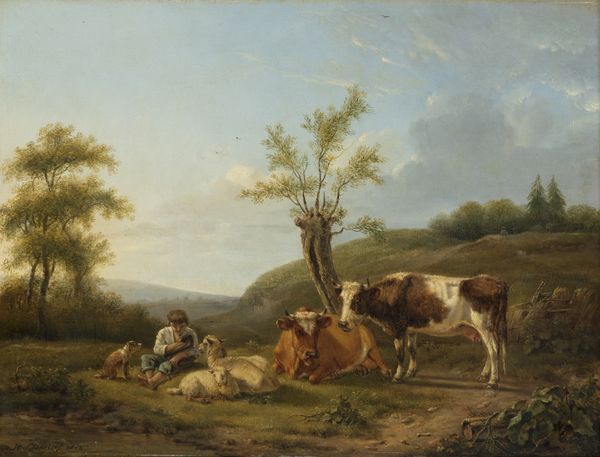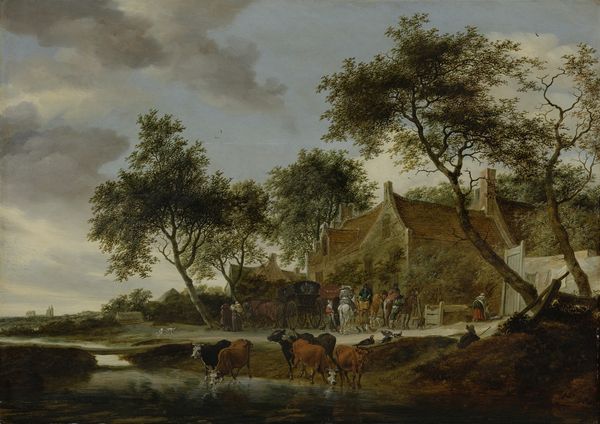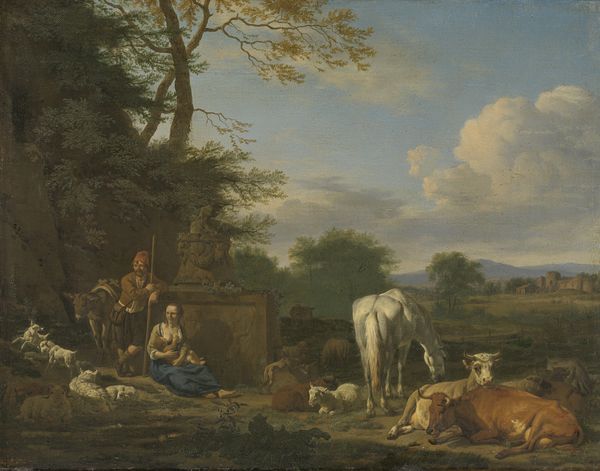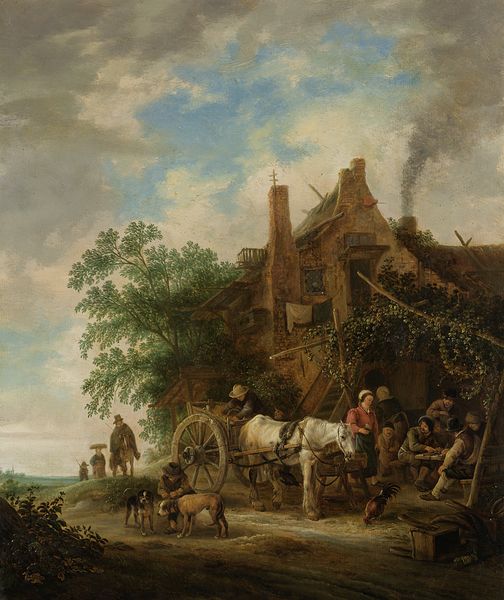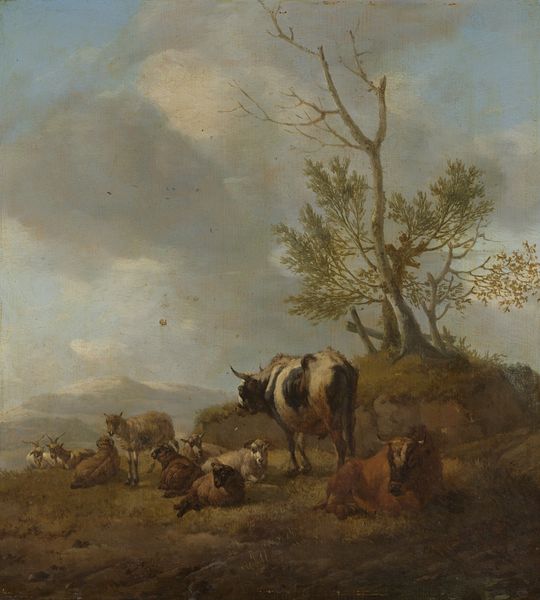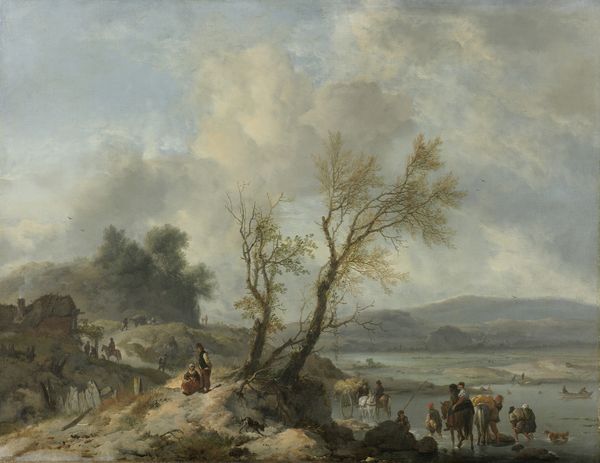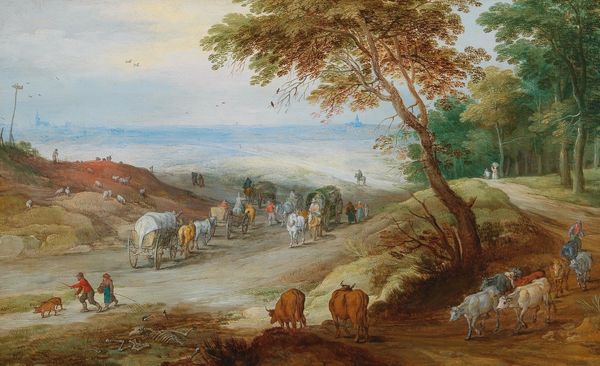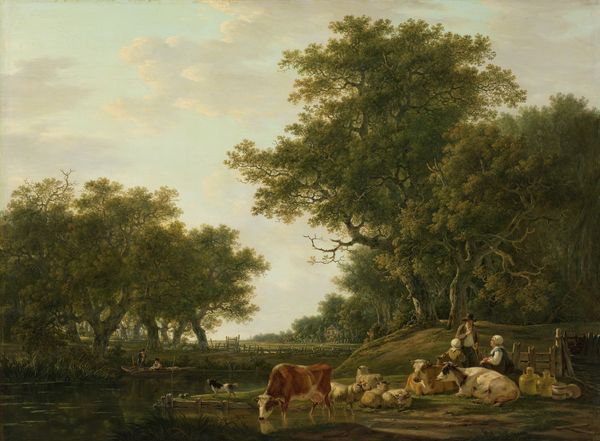
painting, oil-paint
#
narrative-art
#
baroque
#
dutch-golden-age
#
painting
#
oil-paint
#
landscape
#
figuration
#
painting painterly
#
genre-painting
#
realism
Dimensions: height 67 cm, width 89 cm, depth 10 cm
Copyright: Rijks Museum: Open Domain
Curator: What a delightfully odd gathering we have here. "Orpheus and the Animals" by Paulus Potter, painted around 1650, now residing in the Rijksmuseum. Editor: It does feel rather… pastoral but surreal. All those animals lounging together so peacefully—there's an almost biblical quality to it. The light is exquisite too, soft and unifying. Curator: The image of Orpheus charming animals with his lyre goes back centuries, becoming incredibly popular during the Renaissance and Baroque eras. It symbolized harmony, not just in nature but also within society and, importantly, good governance. Think of Louis XIV's self-fashioning—it’s no accident he appeared as Apollo, who is often associated with Orpheus! Editor: Absolutely! Harmony is key. The assembly of animals becomes an emblem. It's more than just fauna; there’s a whole bestiary present, and in their collective attention to Orpheus, they represent civilization itself—ordered, peaceful, and attentive to its ruler. That sense of 'correct' social order is prevalent, isn't it? Curator: Potter, who specialized in animal paintings, imbues the scene with a Dutch sensibility for realism. Each animal, from the camel to the little bunny, is rendered with an impressive degree of anatomical accuracy. That said, placing a camel and a lion together in a Dutch landscape… it's clearly a carefully constructed fantasy, idealized, though built upon observable fact. Editor: The light here reinforces that sense of order. It isn't a raw, overwhelming natural force; it’s managed, illuminating only what needs to be seen. Think about it this way: the inclusion of exotic creatures might reflect increased global trade at the time. But their submissive posture—their willingness to listen—that conveys a potent political message. The wild tamed through art. Curator: And this is the genius of Potter; his incredible ability to create accessible political and moral narratives that appealed to a broad audience at a specific historical moment, and that resonate across the centuries. It seems, that in the theatre of politics, and on the canvas, some stories and their symbols never quite fade. Editor: Yes, a timeless theme: art bringing order and enlightenment. Something to keep in mind today, I suppose.
Comments
rijksmuseum about 2 years ago
⋮
The Classical poet Ovid described how Orpheus en-chanted nature with his wonderful lyre music. This theme was popular among 17th-century animal painters because it gave them a chance to depict many different sorts of animals. Here Potter demonstrates that his repertoire encompassed more than the usual farm animals. He painted dozens of native and exotic beasts. In the middle Orpheus is strumming his harp.
Join the conversation
Join millions of artists and users on Artera today and experience the ultimate creative platform.
